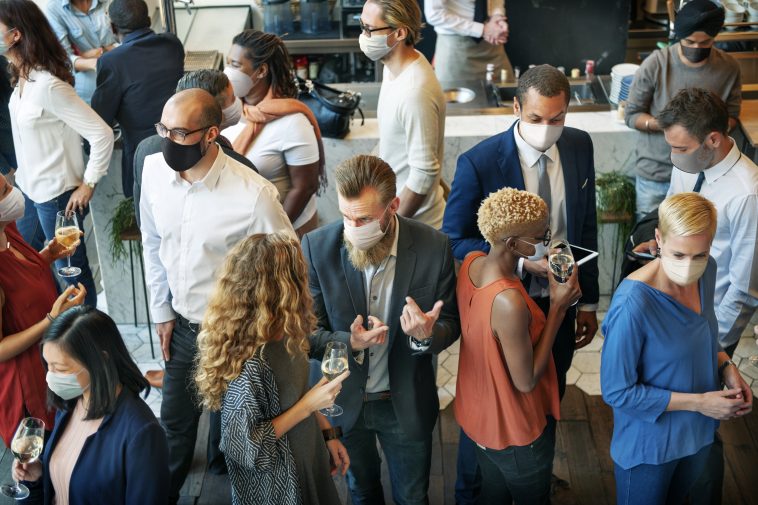Almost two years since the World Health Organization (WHO) officially declared the COVID-19 epidemic as a global pandemic, the world is still reeling from the complicated developments and serious impacts that the pandemic has brought. with many unsolved mysteries. The uncontrollable pandemic is forecast to pose more challenges to people in the “third year of COVID-19”.
* More than 448 million cases, 6,029,808 deaths and 5 variants
The COVID-19 pandemic, also known as acute pneumonia caused by a new strain of corona virus or Wuhan corona virus epidemic, is an infectious pandemic caused by the SARS-CoV-2 virus. The outbreak began in December 2019 in Wuhan city in central China’s Hubei province and then spread to many countries and territories. On February 11, 2020, the International Committee on Taxonomy of Viruses officially named this new strain of corona virus SARS CoV-2. On March 11, 2020, WHO officially declared the COVID-19 epidemic as a global pandemic. The pandemic after 2 years has appeared and has spread in 221 countries and territories with a total of 448,597,111 cases of COVID-19, including 6,029,808 deaths.

Over the past two years, the original strain of the virus that causes COVID-19 has mutated into five “worrisome variants,” based on the severity of the disease, the effectiveness of medical responses, and the ability to spread. from person to person. In it, the Alpha, Beta and Gamma variants were downgraded by WHO to “variants to watch” in September 2021, while the Delta and Omicron variants are still considered “worrying variants” hesitate”.
In December 2021, the WHO warned that the overall risks associated with the worrying new variant Omicron remained very high. There is already strong evidence that the Omicron variant is superior to the Delta variant in infectivity, with a more than twice as fast increase in transmission rate – from 2 to 3 days – and a rapid increase in prevalence. cases reported in several countries. The Omicron variant continues to spread rapidly across the globe and is now recognized in most countries. Meanwhile, the BA.2 sub-line of the Omicron variant, also known as “stealth Omicron”, is spreading strongly and becoming mainstream in many countries, and has also caused the world “headaches”. “Stealth Omicron” causes more than a third of new Omicron infections around the world.

* The origin of the virus is still an open question
The appearance of the Omicron variant is also recreating the story that happened 2 years ago when the SARS-CoV-2 virus first appeared in Wuhan, that is, countries warned to close their borders; The newspapers obsessively reported each new case. And once again, the question of the origin of the virus that causes the disease is raised.
Two years have passed, but countries are still unclear about the origin of the virus. An independent investigation is not possible, and key information is not available. Experts still argue around the theory that the SARS-CoV-2 virus was “leaked from the laboratory”. It is hard to imagine in a world where all you want to know is just sitting at your computer, so many “open” sources on the internet, so many groups and secret sources of information, but information about a The pandemic that has killed more than 6 million people around the world and infected more than 448 million is still incomplete.
Major international organizations with a role in containing the pandemic, such as the WHO, on January 14, 2020 stated that “preliminary investigations conducted by the Chinese government have found no evidence of human-to-human transmission of new strain of corona virus in Wuhan”.
* Many achievements in vaccines and treatment drugs, but COVID-19 is still a mystery

Two years of raging COVID-19 pandemic show the important role of masks, vaccines and isolation measures, but there are still unsolved unknowns such as prolonged COVID (long COVID), effectiveness vaccine protection.
So far, the world has made a lot of progress in epidemic prevention. Many effective vaccines have been researched, developed and shipped such as AstraZeneca, Gam-COVID-Vac (also known as SPUTNIK V), Vero Cell, Pfizer/BioNTech’s Comirnaty, Moderna, Janssen, Hayat-Vax and Abdala… With the rapid vaccination campaign, to date, tens of billions of basic and booster doses of COVID-19 vaccine have been used globally. WHO also confirmed that booster shots have significantly improved the protective effectiveness of COVID-19 vaccines. It is undeniable that the effectiveness of the vaccine in the treatment of patients with COVID-19 because in fact, in those who have been vaccinated, most of them are asymptomatic, have mild symptoms, and avoid the risk of serious illness. hospitalization and death.
Oral anti-SARS-CoV-2 drugs, which are promising for the treatment of COVID-19 because they can be administered at home at the onset of symptoms and reduce the risk of hospitalization and death, are also being studied and tested. permission to use. In December 2021, the US Food and Drug Administration (FDA) approved the use of Paxlovid – Pfizer’s SARS-CoV-2 antiviral drug – to treat COVID-19 after being diagnosed with COVID-19



